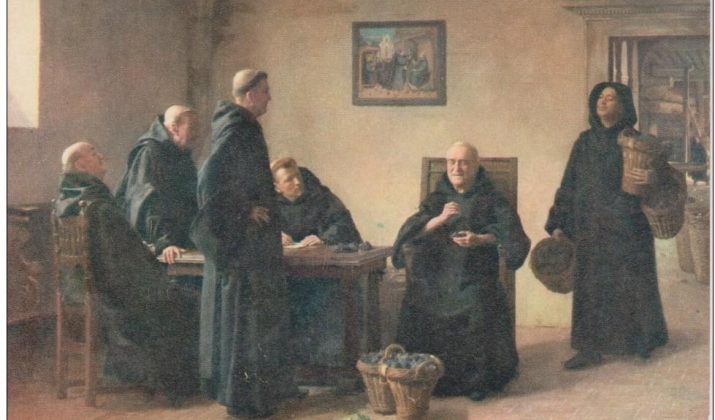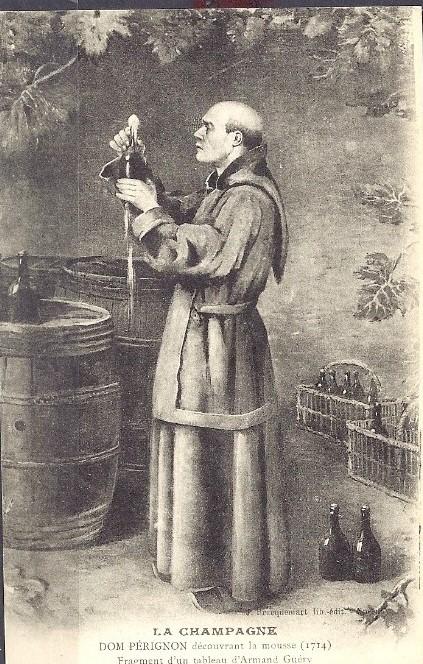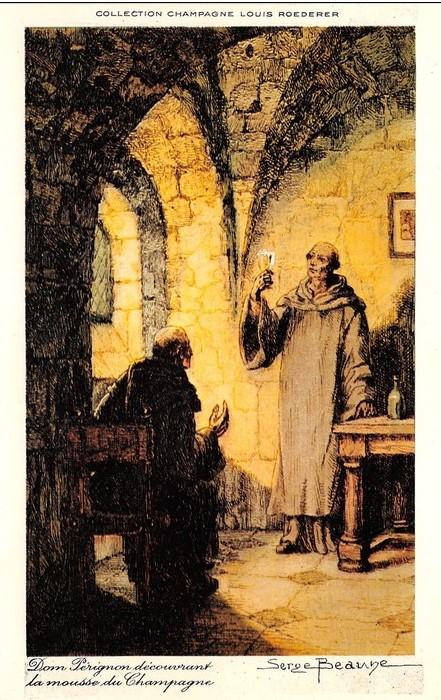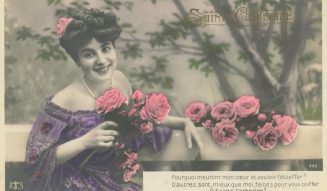Known as the most festive drink in the world, the legend of champagne goes back to Dom Pérignon, but who is this monk?
 Version Moderne Chromo Le Cellier De Dom Pérignon
Version Moderne Chromo Le Cellier De Dom Pérignon The man who created “the best wine in the world” was born in December 1638 or early January 1639 in Sainte-Menehould, which is still home to a statue of its local hero. His baptismal name was Pierre Pérignon. He studied at the Jesuit college in Chalons-en -Champagne before taking holy orders in 1656 at the Benedictine monastery in Verdun. Following the doctrine of Saint-Benoît, he alternated manual work, theology and prayer.
In 1668, he joined the abbey of Saint-Pierre de Hautvillers in the Marne, returning to his Champagne roots. He was assigned to the task of cellarer-intendant, which gave him the opportunity to look after the vines and presses.
Dom Pérignon’s viticultural research took a major turn when, as soon as he arrived at the monastery, he decided to assemble grapes from different varieties before pressing them. The effervescence of Champagne wine that we are so fond of today was, at the time, a defect of this wine nicknamed “devil’s wine” or “jumping cork” because the foam tended to make these explode.
According to legend, following a pilgrimage to Saint-Hilaire in Languedoc, Dom Pérignon discovered the method of making Blanquette de Limoux, which had already been in existence for over a century. Realising that sparkling wines were all the rage at the court of Louis XIV and knowing from experience that Champagne wine had a good nature for becoming effervescent, he is said to have transposed this method of vinification and thus produced the first Champagne cuvées.

He would then have refined his methods by reinforcing the glass of Champagne bottles and using corks held in place by oil-soaked hemp twine to create the wine that made “stars drink”, according to the phrase attributed to him at the end of the 19th century.
According to legend, the sinful Baroness Jeanne de Thierzy (who is said to have drunk it at Hautvillers Abbey with her confessor), had it sent to the court of Louis XIV via the Marshal de Créqui, whose mistress she was. The drink became all the rage and helped Hautvillers Abbey, which was in decline at the time, to recover its panache and acquire a new reputation.

Dom Pérignon died in 1715 in his beloved Saint-Pierre d’Hautvillers abbey, but he will go down in history for having created champagne,one of the wines if not the most famous wine in the world!
Of course, it remains a legend, but Dom Pérignon is an iconic figure who gave his name to Moët et Chandon’s most prestigious cuvées and will forever be one of the region’s most famous characters!
Discover champagne-related collectibles on www.delcampe.net, the marketplace for collectors






It’s fascinating how Dom Pérignon, a monk, played such a pivotal role in the creation of champagne as we know it today. I always assumed it was more of a happy accident, but it turns out he was very intentional with his research and innovations!